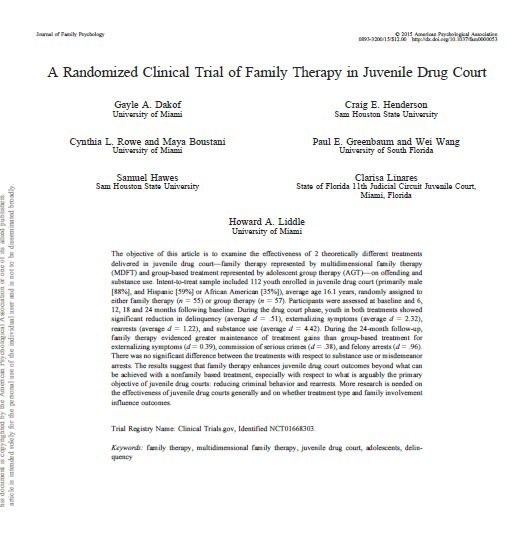A randomized clinical trial of family therapy in juvenile drug court

The objective of this article is to examine the effectiveness of 2 theoretically different treatments delivered in juvenile drug court—family therapy represented by multidimensional family therapy (MDFT) and group-based treatment represented by adolescent group therapy (AGT)— on offending and substance use. Intent-to-treat sample included 112 youth enrolled in juvenile drug court (primarily male [88%], and Hispanic [59%] or African American [35%]), average age 16.1 years, randomly assigned to either family therapy (n 55) or group therapy (n 57). Participants were assessed at baseline and 6, 12, 18 and 24 months following baseline. During the drug court phase, youth in both treatments showed significant reduction in delinquency (average d .51), externalizing symptoms (average d 2.32), rearrests (average d 1.22), and substance use (average d 4.42). During the 24-month follow-up, family therapy evidenced greater maintenance of treatment gains than group-based treatment for externalizing symptoms (d 0.39), commission of serious crimes (d .38), and felony arrests (d .96). There was no significant difference between the treatments with respect to substance use or misdemeanor arrests. The results suggest that family therapy enhances juvenile drug court outcomes beyond what can be achieved with a nonfamily based treatment, especially with respect to what is arguably the primary objective of juvenile drug courts: reducing criminal behavior and rearrests. More research is needed on the effectiveness of juvenile drug courts generally and on whether treatment type and family involvement influence outcomes.
Full text available here: Dakof et al (2015) A Randomized Clinical Trial of Family Therapy in Juvenile Drug Court



